Episode #394: How to Define The Right Milestones That Drive Math Improvement
LISTEN NOW HERE…
WATCH NOW…
In this episode, Jon Orr and Yvette Lehman unpack the difference between long-term objectives and short-term key results. Through a real coaching conversation, they explore how to define milestones that reflect real progress—even when the win is simply establishing a structure or doing what you said you’d do. Not all results have impact right away—and that’s okay.
In this episode, you’ll discover:
- The difference between long-term objectives and short-term key results
- Why short-term wins are sometimes structural—not just outcome-based
- How to define key results that align with your bigger goals
- Why documenting action (not just outcomes) matters in early stages
- How to avoid the trap of confusing big metrics with key milestones
Attention District Math Leaders:
Not sure what matters most when designing math improvement plans? Take this assessment and get a free customized report: https://makemathmoments.com/grow/
Ready to design your math improvement plan with guidance, support and using structure? Learn how to follow our 4 stage process. https://growyourmathprogram.com
Looking to supplement your curriculum with problem based lessons and units? Make Math Moments Problem Based Lessons & Units
Be Our Next Podcast Guest!
Join as an Interview Guest or on a Mentoring Moment Call
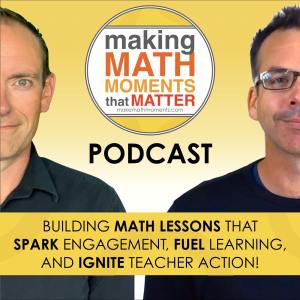
Apply to be a Featured Interview Guest
Book a Mentoring Moment Coaching Call
Are You an Official Math Moment Maker?
FULL TRANSCRIPT
Yvette Lehman: John, I was on a coaching call last week and we didn’t have a chance to debrief yet. So I wanted to get your advice, get some input from you based on that conversation.
Jon Orr: Sure, sure. from what I know is that so far you met with one of our district partners. So this is a district, a team that we support all year long in our math improvement program. in order to support those teams, we have sessions with them. We hear their pebbles in their shoes. We guide them on our four stage process for math improvement.
You’re coming off one of the early sessions. that was early sessions are stage one, where we’re focused on designing goals, designing the vision for math, figuring out how do we want to measure long term goals? How do we want to measure short term goals? What are long term goals? What are short term? And I know that you were consulting on what makes a long term goal, which is what we call objectives.
and then what’s a short-term goal or a milestone and what do those look like, which sometimes, or not sometimes, we call key results. So fill me in, you know, like where are you on this journey with this partner?
Yvette Lehman: Well, I think that where we’ve gained a lot of clarity over the past year is I feel very confident about objectives on how to define them, how to measure them. And so for anybody who’s just joining this community, I’ll kind of do a quick little recap. Maybe this will be good for me to say it out loud and then you can confirm or challenge my current thinking. So to me, our objectives are one, two, maximum three.
big focus zones that we want to collectively strengthen across a school or a district or a state even. Like this is our collective work. These are critical areas that we want to see a shift in. And so we often ask ourselves, know, would I see this changing three years, five years, 10 years from now? And the answer is probably no, because these zones are ambitious and lofty. Right, yes, yes, yes, yes, yes.
Jon Orr: you mean switching zones. You wanna see change in those zones, but not switching the zones.
Yvette Lehman: Right. It’s like these are so important that we know that we’re willing to invest a significant amount of time on it because we know that change takes time. And so something, for example, like strengthening or seeing a shift in computational fluency, that’s not going away a year from now. It’s not like a year from now we’re going to be like, we’re good. All of our students and teachers have computational fluency. We can walk away. Same with, you know, productive struggle or resilience in students. Like these are things that we want to invest in over the long term.
And we need ways to gather evidence over the long term that we’re seeing those productive shifts towards what we’ve all agreed is what we’re aspiring to. And that also requires work in establishing as a collective, what does it look like when we’ve achieved it? What are the changes in behavior and culture and practice that we want to see over the long term?
So that’s objectives, but the conversation that I recently had with one of our partners was around key results. so key results, you already mentioned it’s like short term milestones that we know are critical to get us closer to those big overarching changes we want to see in those zones. And so these would be things that we could actually say are realistic in the next two, three, six, nine months. It’s like,
If I want students to be resilient or I want students to see themselves as problem solvers, okay, what is the critical change that needs to happen now in the short term that is realistic? Like what’s the next best step we can take and how will we know that we got there?
Jon Orr: Right, right. So two really important parts there, right? It’s like, what is the next best step and how will we know that that was impactful or how will we know that that happened or how will we know that that actually got us closer to strengthening the objective that it should fall under? And I think that’s really what you wanna be able to answer. there’s, you could probably, you you can define it any way you like, you can write it any way you like, but really that’s.
that helps you answer the main question you need to answer every single year is that when you get to the end of the year, what were the things, what were the results, what were the key moves we made this year, and how do we know that those were impactful? How do we know that those were the right moves? What were we really looking to achieve? And if we can answer that, then you’re more likely to do more of that the next year, which…
keeps you on consistency, it keeps you on like the target of like strengthening the zones, strengthening the objectives. Like you’re not gonna switch focuses too often because you switch a focus, all of a sudden you’re telling everyone that the last focus didn’t matter and that’s not a cycle you wanna be in. Even though I think a lot of schools and school districts, because they can’t answer that question at the end of the year, like what were the things we did and how do we know that they had impact? It’s hard to answer that sometimes. So this is the coaching that is probably when we,
think about the support we provide mostly to our teams all year long. Sometimes this zone or this part right here is the most critical because it can really set the stage for what comes next and making sure that the gap between expectation and reality is shrunk. And I think that’s an important move. So fill me in, like what was happening here in these conversations?
Yvette Lehman: Well, I think the epiphany that I had, and you mentioned a few times in your explanation of key results, this idea of impact, right? It’s like we want to measure the impact of whatever moves we’re gonna make. But I started to wonder if before we can get to impact in some cases, we need to look at the actual structure and system. And so I’m gonna share a key result with you that is not necessarily measuring impact.
but it’s about changing a system or a structure. So the one that of course is top of mind for me always is like, what if by the end of next year, we committed to having specialized teachers in grades three and up? Like what if that was a milestone that we were, we wanted to hit by the end of next year. We wanted to give in stakeholders, gather voice, know, get a.
research to back it and by the end of next year we convinced or we got the board on board to making a shift in the system so that we could have specialized teachers in grade three to six. That wouldn’t necessarily be, we wouldn’t be looking for impact next year, we would be looking for a change in the system that we believe it’s like if we can change this part of the system then it’s going to improve our objective over time.
Jon Orr: Yeah, true. Yeah, I think when I say impact, and this is true about, I think, your key results, your short-term goals, is just say, what am I looking to create? What am I looking to shift? Like, what is it that I’m hoping to achieve with this move? And so a framework we often help our teams with is the if-then-how framework. If I do this, if I work and do all the things required to create, you know,
that change then, or to create, and I say that change, because I think what you’ve already done is defined the achievement you actually are looking for. Like you’ve already got, you know, the then, because it’s like, if I do all this stuff, like if I collect research, I then the actual result is in your situation is we’ve got approval to have grade level, you know, specific teachers, which is the achievement you’re actually looking to create.
Right? Like that’s a move on your pathway. And so I think the if then there is very clear and also the measurable is very clear because it’s like this thing occurred and that’s exactly the impact and the achievement I was looking to have, which is like a structural change, which is in a way.
Stage two for us is thinking about structure, right? So like stage one, stage two have to go hand in hand, even though we will always say that it’s not doing stage one then stage two. Often there’s pieces of stage one that we start with and then we have to bounce over to like thinking about structures, thinking about optimizing the pieces we have, thinking about our PD moves, the ways that we’ve supported teachers in the past. And we have to know what some of those pieces are or like you’re saying, shift some of those pieces so that we can come back and write appropriate key results. or appropriate short-term goals to you know, to hit, to strengthen our zones.
Yvette Lehman: So I’m going to give you the one that actually that was my own. That was the selfish one that I wanted to highlight. Any chance I get to tell people I think we should have content specialists in grade three and up, I use it. But here’s the one that came out of the meeting. So the shift that this leader wants to see is in how the teacher collaboration time is being leveraged. Like right now,
there’s no real structure, accountability protocol in place. It’s kind of like, here’s your teacher collaboration time. Sometimes it’s used for housekeeping. Sometimes it’s used as an extra prep and it’s not necessarily being maximized to build capacity for teaching and learning of mathematics. And so the milestone that the leader wants to hit for next year is that more than 70 % of that time is dedicated
to math teaching and learning. So what they wanna see is not necessarily the impact of that teacher collaboration time, they just want almost like a change in norm. And that’s gonna be hard to do, right? If teachers are accustomed to having a lot of autonomy when it comes to that teacher collaboration time and now the leader’s coming in and saying, no, we wanna shift the focus of this time to be…
more strategic, more aligned, more student focused for the purpose of unpacking standards for moderated marking, it may not be an easy change to implement without, of course, buy-in and belief from the educators. And so what all they’re hoping to achieve by the end of this coming school year is that the time is being used in a more purposeful way.
Jon Orr: Right, so I think what you’re getting at is in a way the levels required, there’s in a way a continuum of how to write an important key result, which is your short term goals on your pathway to strengthening your objective. if you do the ask yourself why five times, the why here isn’t to just restructure, right? The why here is not that. Like the goal isn’t to just
hey, I’ve got this better use of time and then we’ve got 70 % of teachers using this time, but why is that important? What are you hoping to achieve with restructuring? And that might be, and answering that question is also really important because you need to also convince yourself that this is the right move because partly what you also need to ask yourself is there are a lot of moves we could do.
There are a lot of things we could restructure. There’s a lot of things that we could be doing. And maybe if I don’t ask myself the why a few times, maybe there’s a better course of action than doing that to get to where I really want to go. And what I mean by a better course of action, it could be, and I’m not saying this one is, I’m just saying these are the questions you want to ask yourself when working with key results and just trying to write those key results and trying to say like, is that the…
Is this the move I wanna make right now? Because if I go do this, then I’m hoping, know, then I will see 70 % of my time being used appropriately. But then I go, but why? And maybe there’s another move that I can make to get to the why faster or more streamlined or stronger. And so while I think, like why I think answering that is really important in this leader’s case is,
And it still might be the, if we know that the why is there, then we still might still write the key result the way you just wrote it or just said it, because that might be stage one. Like it might be like, we know that we do this, then we should see this. But if we, if we work out just structure right now, like if our only goal is to just put this in place so it’s repeatable. And so people are starting to use this time wisely. starting to, and then what we can start to do is go like, well, what is the, like,
How are we used? Like, what is happening during that time for us to be like—because right now, it’s just like 70 % of time is dedicated towards like math maybe, and that’s it. Then maybe year two or year three is where we’re starting to go like, let’s get this a little bit deeper and let’s actually monitor or measure or collect evidence around what we’re doing around math to strengthen and get closer to the goals. And then maybe like year three or four is like, okay.
Now are we now what achieve like what was this structure doing because now it’s regular. It’s like we’re seeing this consistently, which is a really important piece of sustainability across your system or your school. But then it’s like, okay, now are we are we taking it one step further and going like, let’s now measure, you know, use this this to measure impact that’s happening in the classroom or change in teachers practice or whatever that change happens to be like, sometimes just mapping that out. in advance can be really helpful to say whether this move is the right move now.
Yvette Lehman: think that my aha, and I have a tendency to do this, it’s like I want to put a key result in a box and say that it’s this and it looks this way and it sounds this way and now everybody needs to write it this way. Where what I’m finding is that I wanna be a little bit more flexible in my definition and just be able to articulate that this is the milestone.
we can realistically hit this year that’s going to help us get closer to those objectives that we’ve set out. And this is how we’ll know we hit it. And sometimes we might be at a place where we’re able to really dig into the impact. And sometimes it might be just as simple as we need to make this commitment. We need to all agree that this is worth committing to and that’s gonna be a win for us. And so I guess, know, my…
Conclusion is that depending on where you are on your scale of implementation or where you are around belief or the systems you have in place or structures that you’re currently maximizing, they may look and sound a little bit different, but at the end of the day, what matters is that you can articulate by the end of next year, by the end of six months, nine months, that you had these milestones and you hit the milestones and this is how you know, or you didn’t. And this is why, and this is what you need to do.
you know, the next iteration of this move.
Jon Orr: Right, so what I think you’re saying is like you’re saying like if I, it’s okay that my key result is a series of inputs, things that I do, which are sometimes action items on a to-do list. And that might be the right move because measuring the completion of that move is a routine that we need to build or we need to like put this into place so that the longer next step.
can come into play. you’re right, key results can look very different from a team that already has a coaching structure in place that’s consistent and optimized the right way. And their key result around the coaching structure is going to look different than a team that doesn’t have a coaching structure. Like, you want to be like, you’re right, let’s just hire five coaches and we’re going to…
strengthen some of the, we’re gonna hold four different sessions on coaching techniques. And then you could also say, well, why that? Like, why, like, what is it that you’re actually looking to do with strengthening a coach up and how will you know that that session works? And I think it depends on the thing, because if it’s like, if I’m just gonna get the hiring done, or if I’m planning a session, then sometimes I think the important part is like,
that piece, whatever that item happens to be, should dictate what result you’re looking for, achievement you’re looking for. Because some will be time bound, some will be very much like check-listy, and that you might say that that’s enough. But some might be like, are you sure that that’s really what you want to do because of the achievement? And are you confident that the outcome of doing that is realistic?
Yvette Lehman: Okay, I have a question for you. I feel bad putting you on the spot with this question. So you don’t have to have an answer, it’s just a question. What you just said made me think that maybe if we actually want to get stuff done, like it’s like we wanna get real and realistic, we should be setting key results that are way shorter. Like maybe the first key result is getting the five coaches hired. And then it’s like, I’ve achieved this key result. And then I said another key result. this isn’t.
Jon Orr: You can’t set the key result without the coaches in a way, right? Like the actual key result you really want.
Yvette Lehman: So it’s like, think about the change that needs to happen now. The critical change that’s going to position you to get closer to the transformational change you want to see in your one focus zone and then achieve it. this is the thing is like we want whatever your key results or milestones to be achievable. Like it’s like we actually want to be able to do this work and hit the mark and say we hit that milestone, we’re onto the next.
Jon Orr: That’s right. so the, the where you have to get a little bit more in depth is because you’re going to ask yourself the why five times. It’s like, if I hire, if I’ve got money to hire three coaches, then if I do that and I hit that nap, like when the next two months, like what, why the coaches? Like why three coaches? And, and, and what am I looking to do once I have the coaches?
And what does the one year goal look like with the coaches? Because an action item is hiring the coaches. But then the key result is like, now I got them. So what am I hoping to achieve with the coaches themselves? What am I looking to achieve with the teachers those coaches are, say, going to be coaching this year? Because if we can answer, this is, think, where our teams need the most support, is because answering those questions,
I think is gonna achieve what you’re hoping to achieve, which is getting realistic about hitting those things. Because what happens is most teams will say, I’m gonna hire three coaches. And by the end of the year, they wanna write this great goal that’s like, imagine this is like the dream outcome is that all of a sudden those three coaches went into classrooms and we changed eight schools. I got all of a sudden I got eight schools all teaching.
you know, in this vision of mathematics or they’re teaching with resiliency or they’ll say like, all of a sudden now they have, you know, 80 % of those schools are starting lessons with productive struggle. Like we’ve seen key results written this way, but realizing it’s like, well, is it just, you know, the hiring of those coaches that’s automatically gonna make that happen? Like, is that an appropriate key result? Because you have to rewind and go like,
If I want that to be the result, I have to realize that, well, if I’m gonna shift teachers instruction, teachers are gonna need 49 professional development hours of support over the course of a year. I can’t provide that with a coach. So what does that mean? Like all of a sudden it’s like helping them get real about what you’re actually going to achieve this year by going down this pathway is important so that you can hit those goals.
You can show progress. You can feel like momentum is building. And I think just being real about what’s the likely achievement that can happen with a move that you want to make is the really important part about setting a key result.
Yvette Lehman: And I think you mentioned too, like it’s like setting a realistic short-term milestone, but without losing sight of the big picture and the long-term objective that we’re wanting to strengthen. And so that’s why doing the work upfront, where we’re getting a lot of clarity around what it would look like if we achieved that objective. So we all have a common understanding of what we’re aspiring to.
So that’s our compass and that’s what keeps moving us forward and driving some momentum and helping us answer the question of why. It’s like why this work? Because we want to strengthen computational fluency for all students. we’re going to, these are the things we want to do along the way to get closer. I think by having a lot of clarity around your objectives, not just the leadership team, but all stakeholders, like a lot of transparency with teachers, with administrators, with parents about the work you’re doing and why you’re doing it will help us.
keep pushing the milestone forward without getting distracted, without changing course, without throwing things out every year and starting again. Okay, so what are our takeaways?
Jon Orr: I think our takeaways are making sure that one is that you are thinking about the goals you’re trying to make. are you making short-term goals? Are you making goals that are goals that you can see achieved? And have you defined what achievement looks like? Whether achievement is I’m just getting, like, I will call this a win.
if I can put this and this and this into place, or I can hold three different sessions this year, and then that’s a goal. In a way, and this is maybe the bigger picture I think where we’re leading to, is that there are spectrum of what good goals look like and what great goals look like at the short-term level, at the objective level, because it’s like, could just say I’m focusing on structure, and I just wanna get this in place, but then you could say, well,
I could do that this year and that’s where my win is and that’s where I’m gonna draw the line. knowing that, because you’re gonna ask yourself the why five times is that you could do this really well and you could have like a bigger, like a more impact type goal. Like what does it look like? Like what am I hoping to achieve by then doing that? And if I can answer that, I’m a little bit better. So I think what you wanna do is just to be realistic about what achievement or what…
impact you’re hoping to gain from a move. If I do that, then what achievement will or impact will I create? And how will I know that? If you can answer those questions, you’re going to, you’re going to be able to create great goals and great milestones for you to hit in a year or in a shorter time period.
Thanks For Listening
- Book a Math Mentoring Moment
- Apply to be a Featured Interview Guest
- Leave a note in the comment section below.
- Share this show on Twitter, or Facebook.
To help out the show:
- Leave an honest review on iTunes. Your ratings and reviews really help and we read each one.
- Subscribe on iTunes, Google Play, and Spotify.
DOWNLOAD THE 3 ACT MATH TASK TIP SHEET SO THEY RUN WITHOUT A HITCH!
Download the 2-page printable 3 Act Math Tip Sheet to ensure that you have the best start to your journey using 3 Act math Tasks to spark curiosity and fuel sense making in your math classroom!
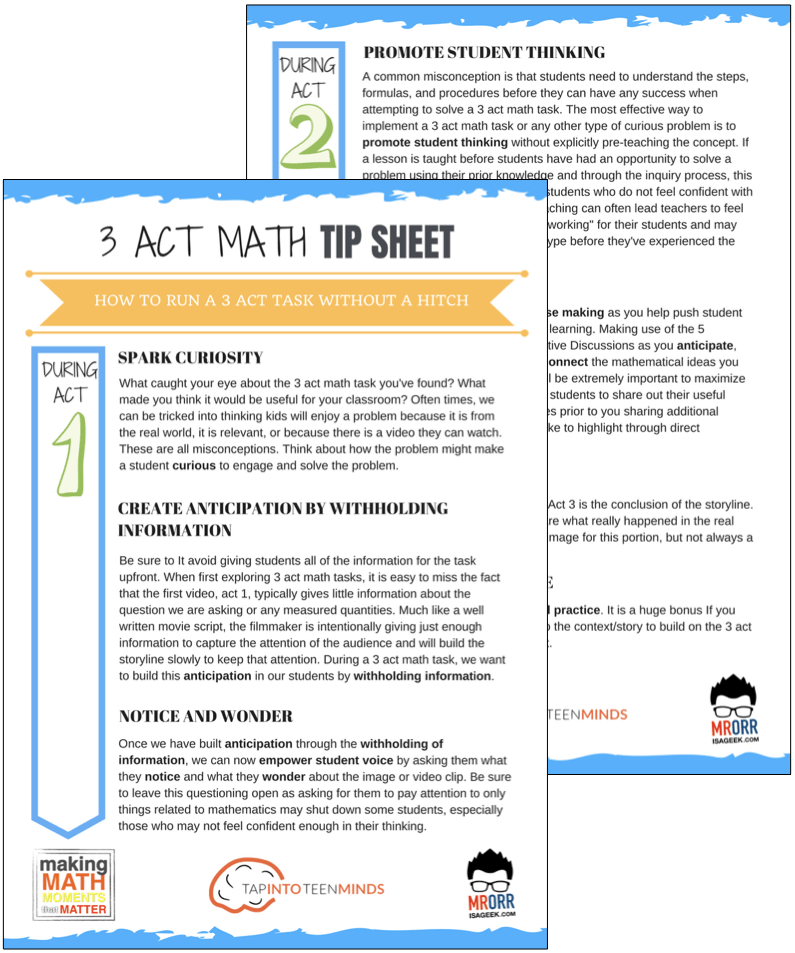
LESSONS TO MAKE MATH MOMENTS
Each lesson consists of:
Each Make Math Moments Problem Based Lesson consists of a Teacher Guide to lead you step-by-step through the planning process to ensure your lesson runs without a hitch!
Each Teacher Guide consists of:
- Intentionality of the lesson;
- A step-by-step walk through of each phase of the lesson;
- Visuals, animations, and videos unpacking big ideas, strategies, and models we intend to emerge during the lesson;
- Sample student approaches to assist in anticipating what your students might do;
- Resources and downloads including Keynote, Powerpoint, Media Files, and Teacher Guide printable PDF; and,
- Much more!
Each Make Math Moments Problem Based Lesson begins with a story, visual, video, or other method to Spark Curiosity through context.
Students will often Notice and Wonder before making an estimate to draw them in and invest in the problem.
After student voice has been heard and acknowledged, we will set students off on a Productive Struggle via a prompt related to the Spark context.
These prompts are given each lesson with the following conditions:
- No calculators are to be used; and,
- Students are to focus on how they can convince their math community that their solution is valid.
Students are left to engage in a productive struggle as the facilitator circulates to observe and engage in conversation as a means of assessing formatively.
The facilitator is instructed through the Teacher Guide on what specific strategies and models could be used to make connections and consolidate the learning from the lesson.
Often times, animations and walk through videos are provided in the Teacher Guide to assist with planning and delivering the consolidation.
A review image, video, or animation is provided as a conclusion to the task from the lesson.
While this might feel like a natural ending to the context students have been exploring, it is just the beginning as we look to leverage this context via extensions and additional lessons to dig deeper.
At the end of each lesson, consolidation prompts and/or extensions are crafted for students to purposefully practice and demonstrate their current understanding.
Facilitators are encouraged to collect these consolidation prompts as a means to engage in the assessment process and inform next moves for instruction.
In multi-day units of study, Math Talks are crafted to help build on the thinking from the previous day and build towards the next step in the developmental progression of the concept(s) we are exploring.
Each Math Talk is constructed as a string of related problems that build with intentionality to emerge specific big ideas, strategies, and mathematical models.
Make Math Moments Problem Based Lessons and Day 1 Teacher Guides are openly available for you to leverage and use with your students without becoming a Make Math Moments Academy Member.
Use our OPEN ACCESS multi-day problem based units!
Make Math Moments Problem Based Lessons and Day 1 Teacher Guides are openly available for you to leverage and use with your students without becoming a Make Math Moments Academy Member.
Partitive Division Resulting in a Fraction
Equivalence and Algebraic Substitution
Represent Categorical Data & Explore Mean
Downloadable resources including blackline masters, handouts, printable Tips Sheets, slide shows, and media files do require a Make Math Moments Academy Membership.
ONLINE WORKSHOP REGISTRATION
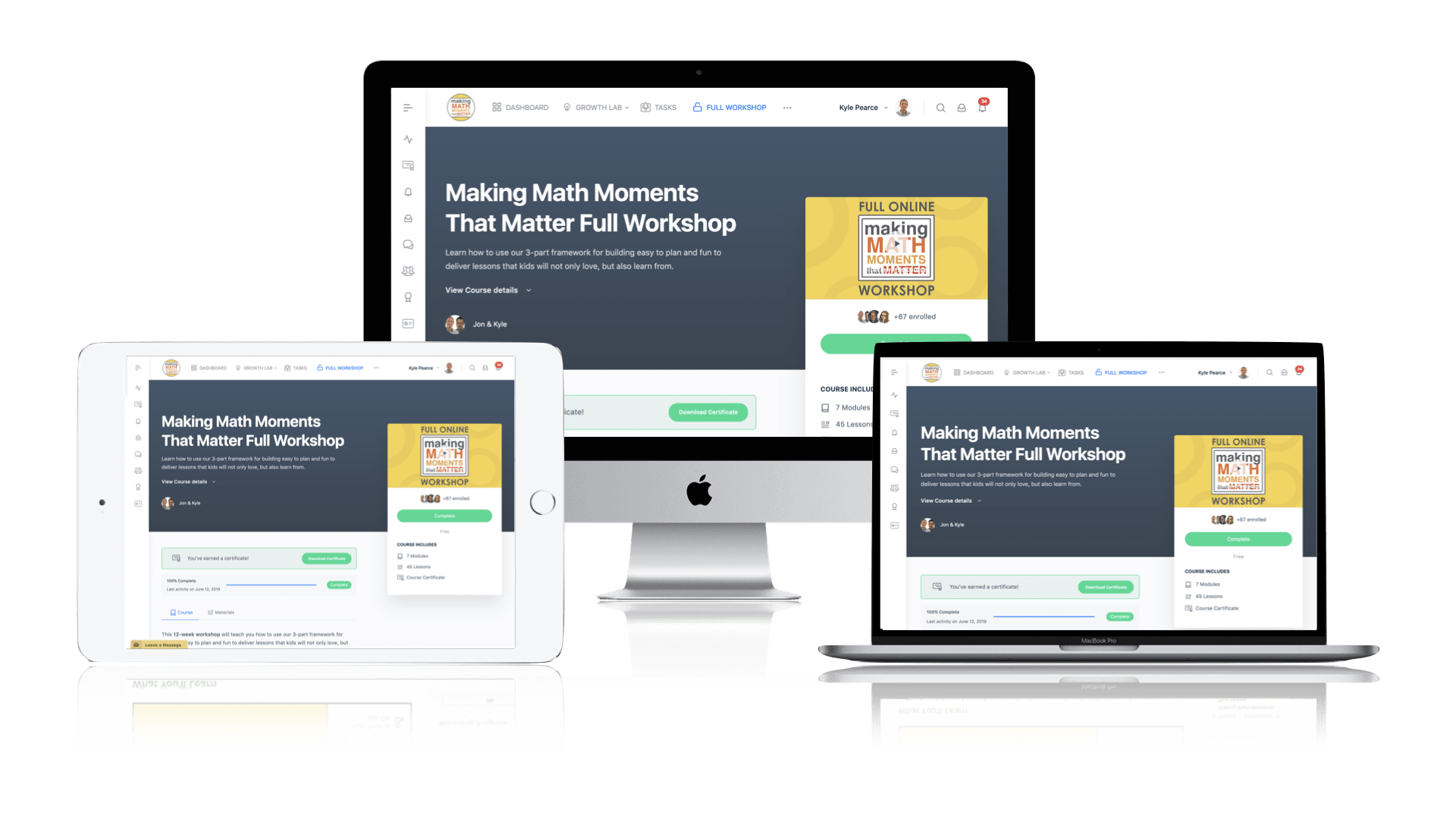
Pedagogically aligned for teachers of K through Grade 12 with content specific examples from Grades 3 through Grade 10.
In our self-paced, 12-week Online Workshop, you'll learn how to craft new and transform your current lessons to Spark Curiosity, Fuel Sense Making, and Ignite Your Teacher Moves to promote resilient problem solvers.
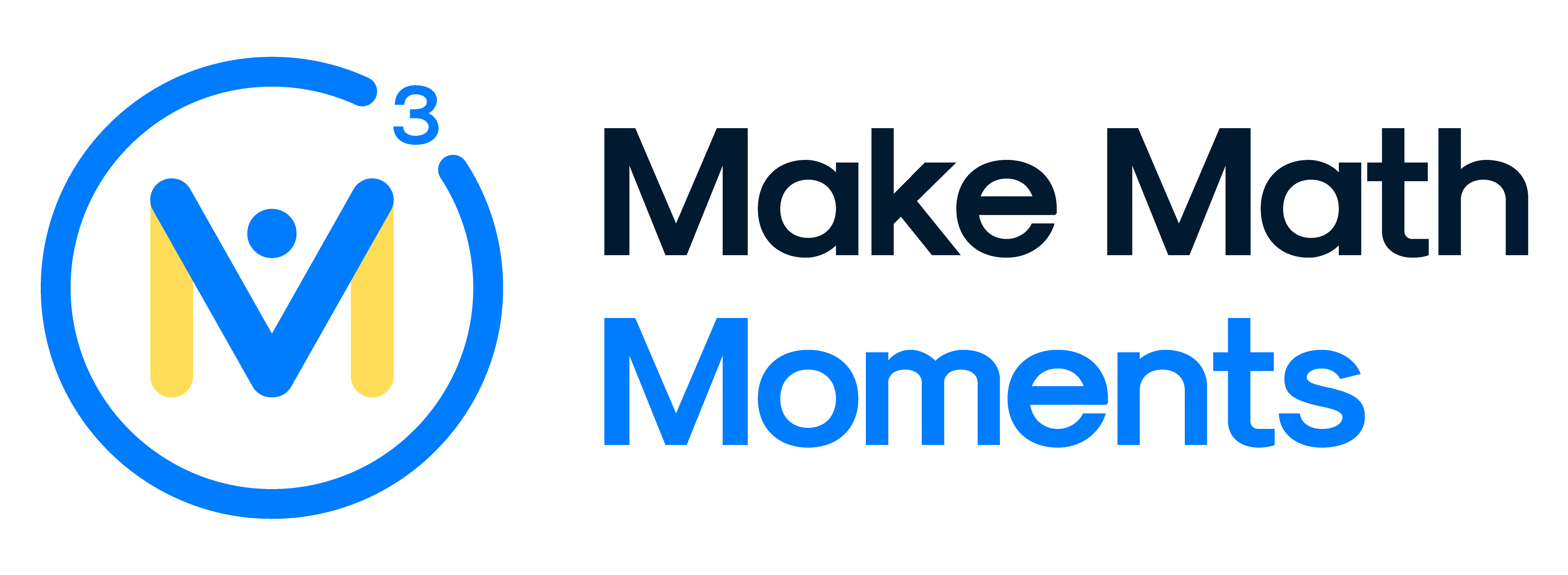
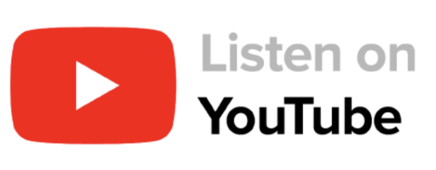


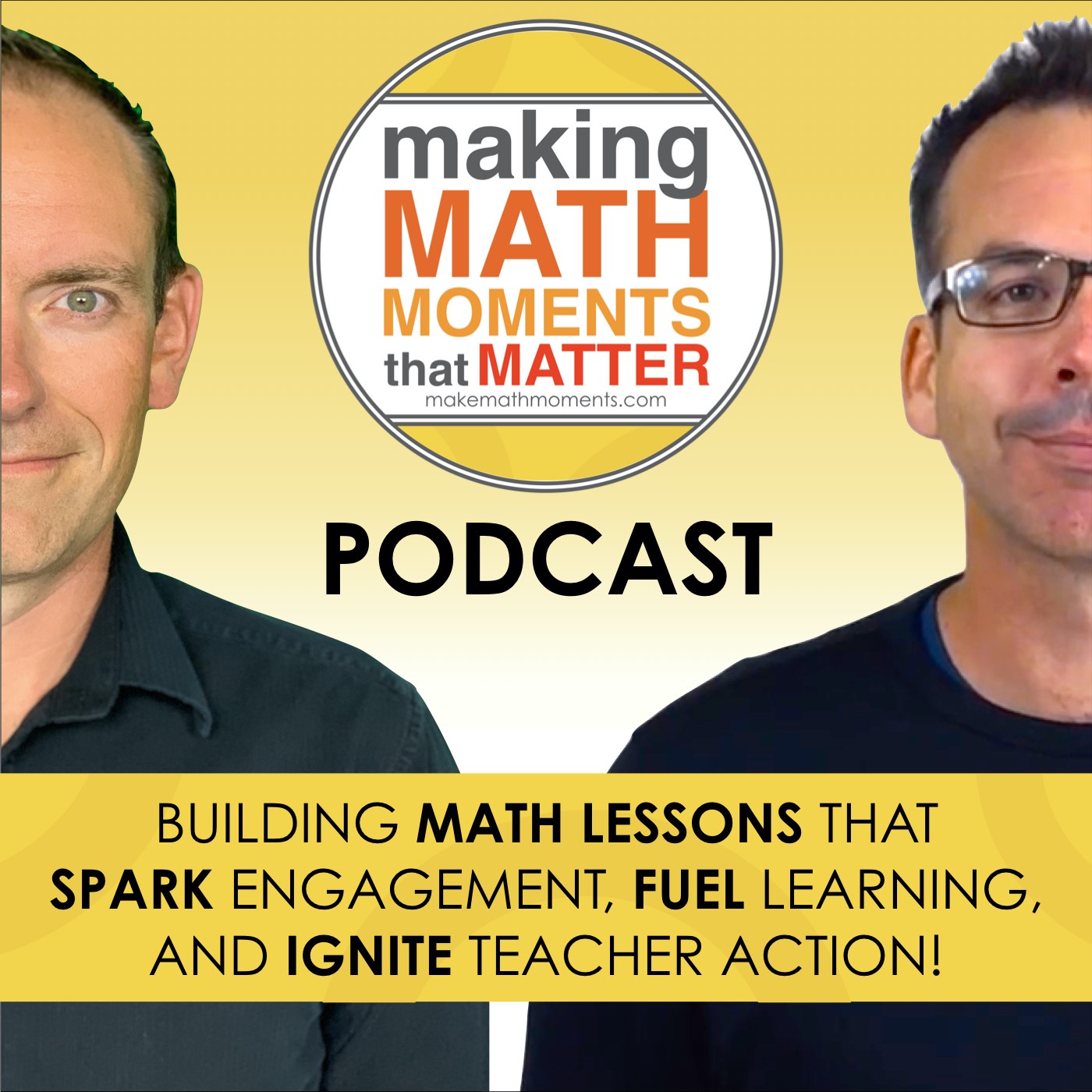
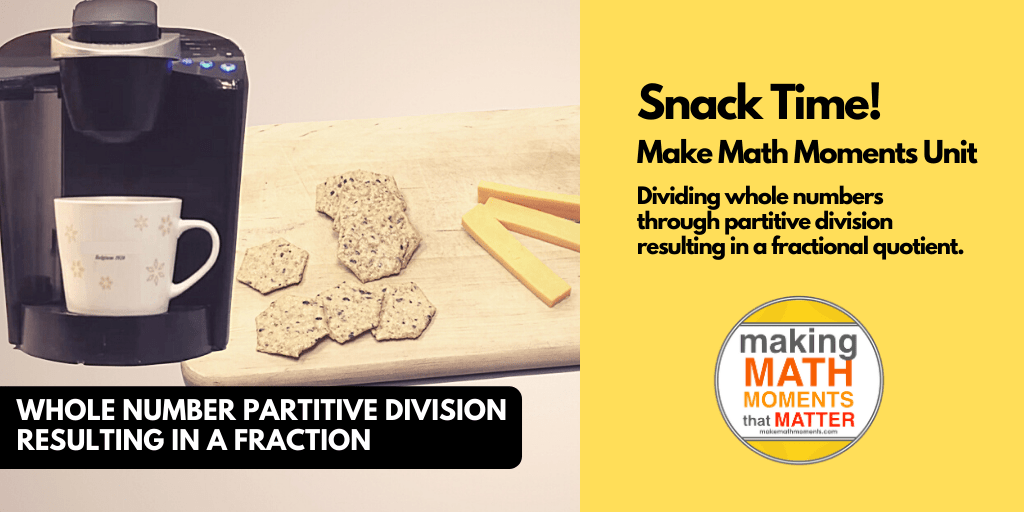

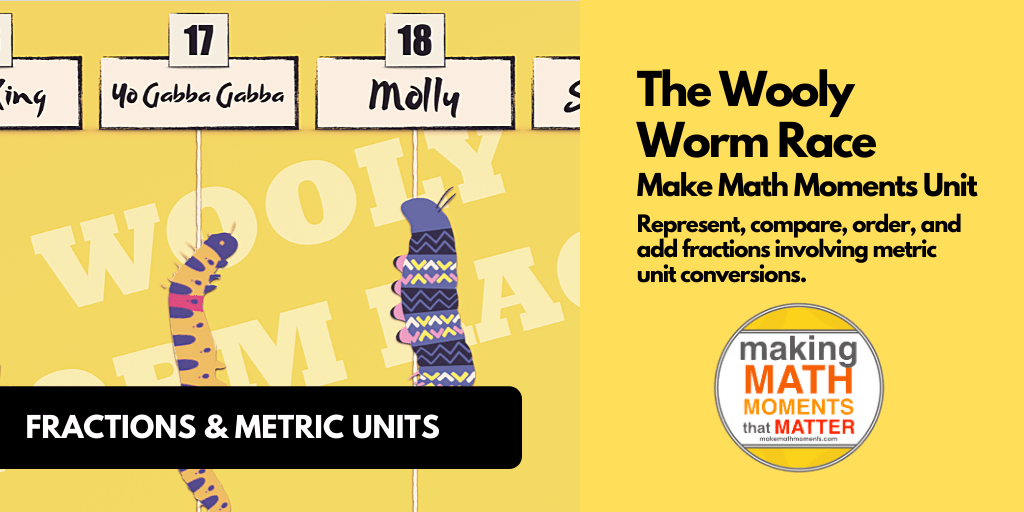
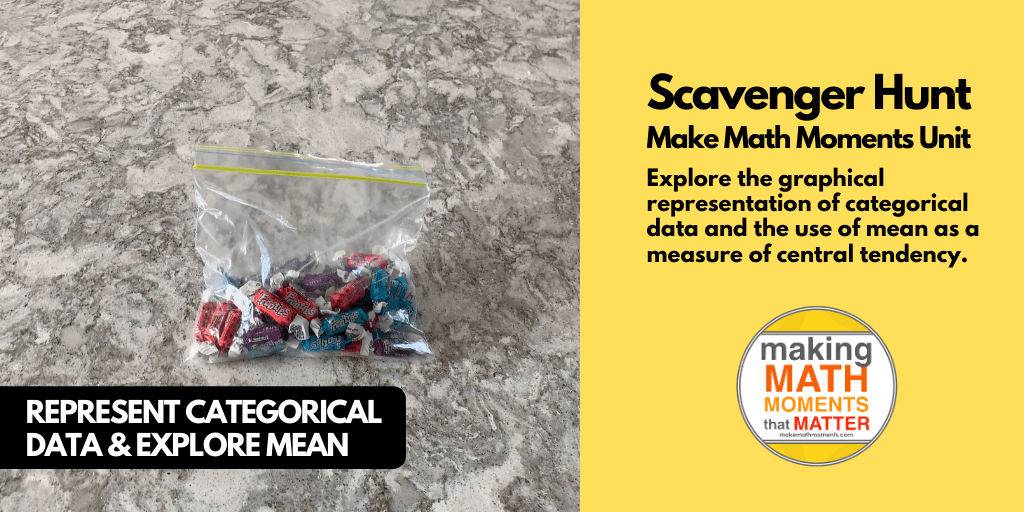
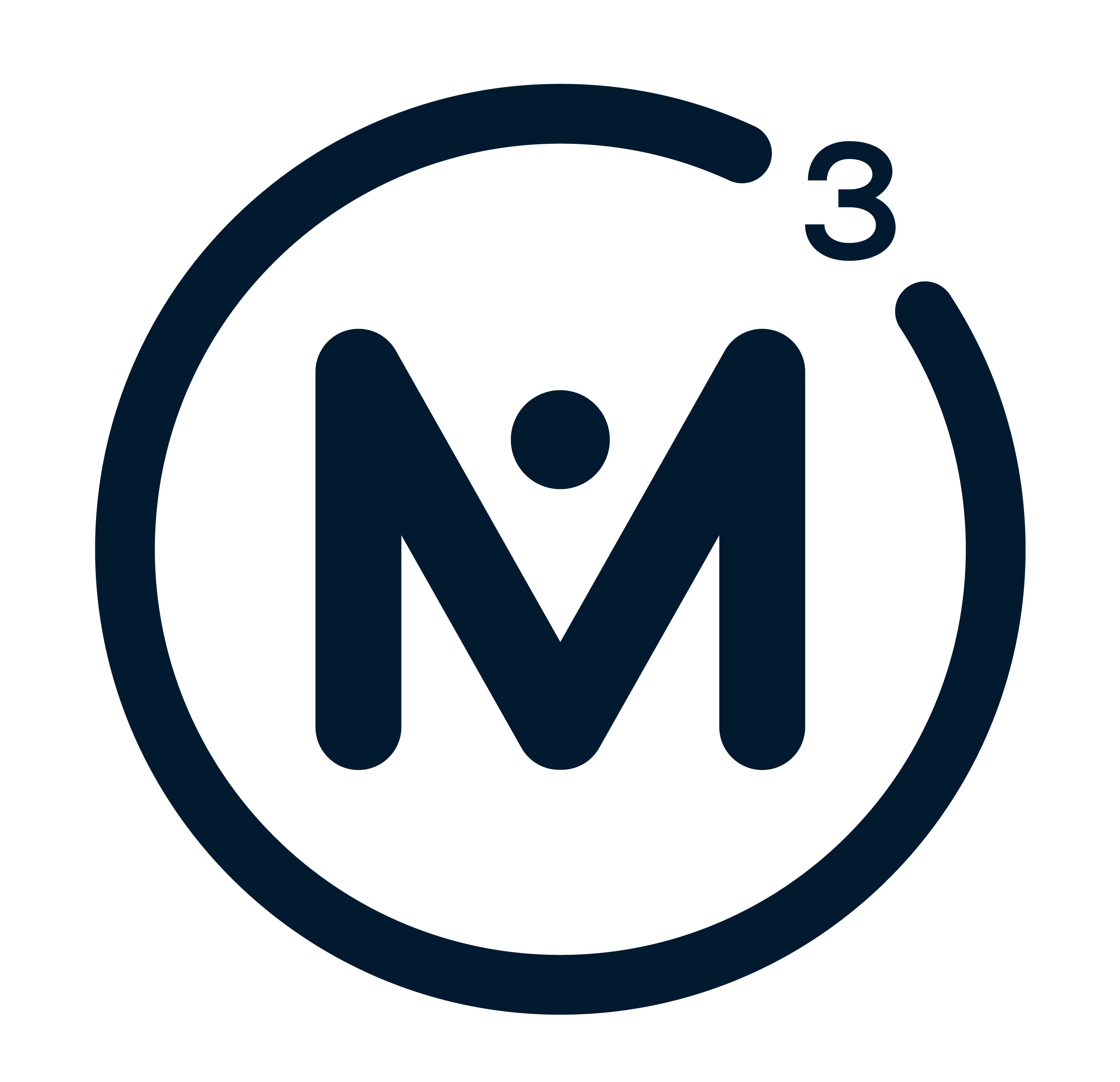
0 Comments